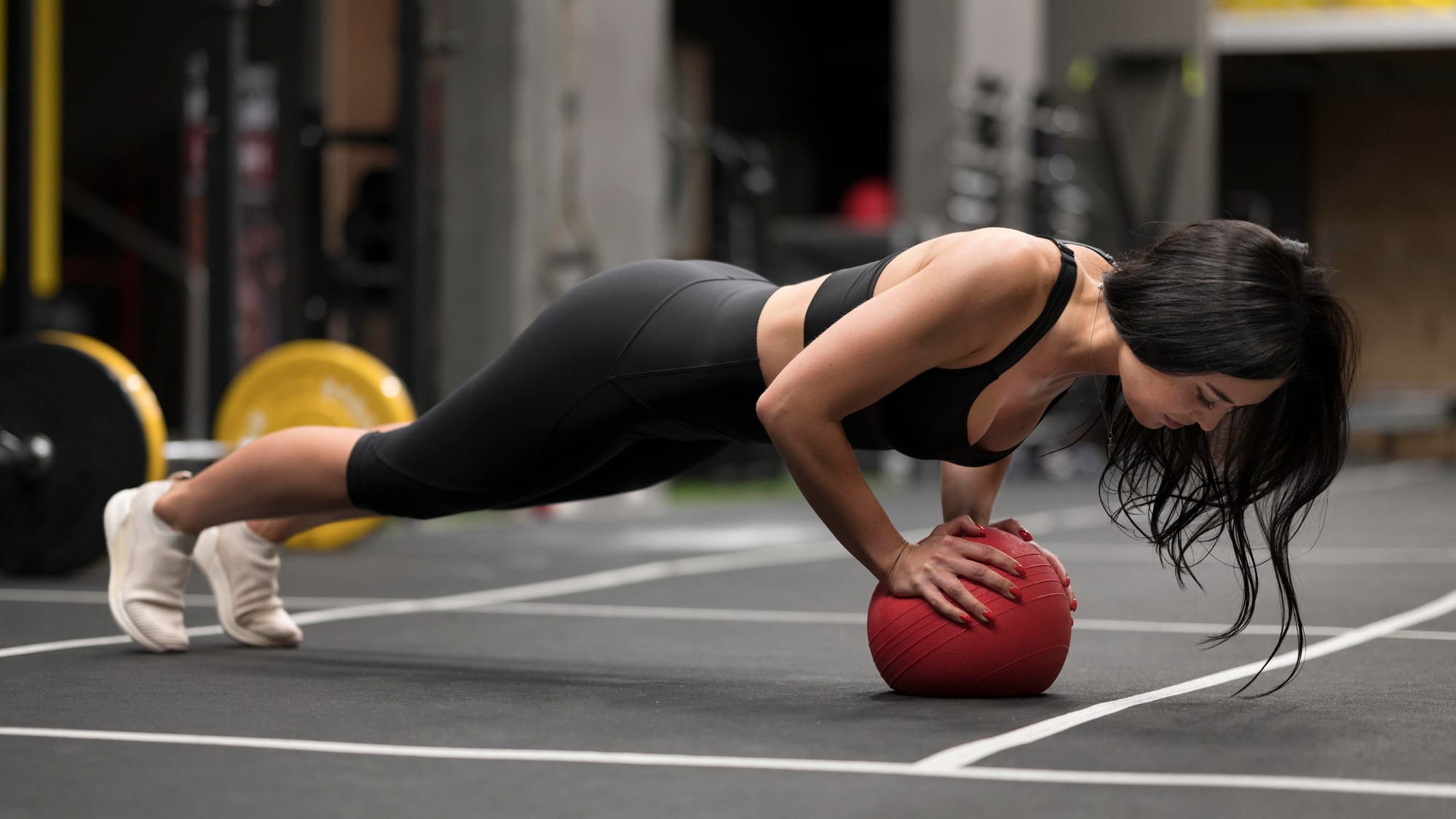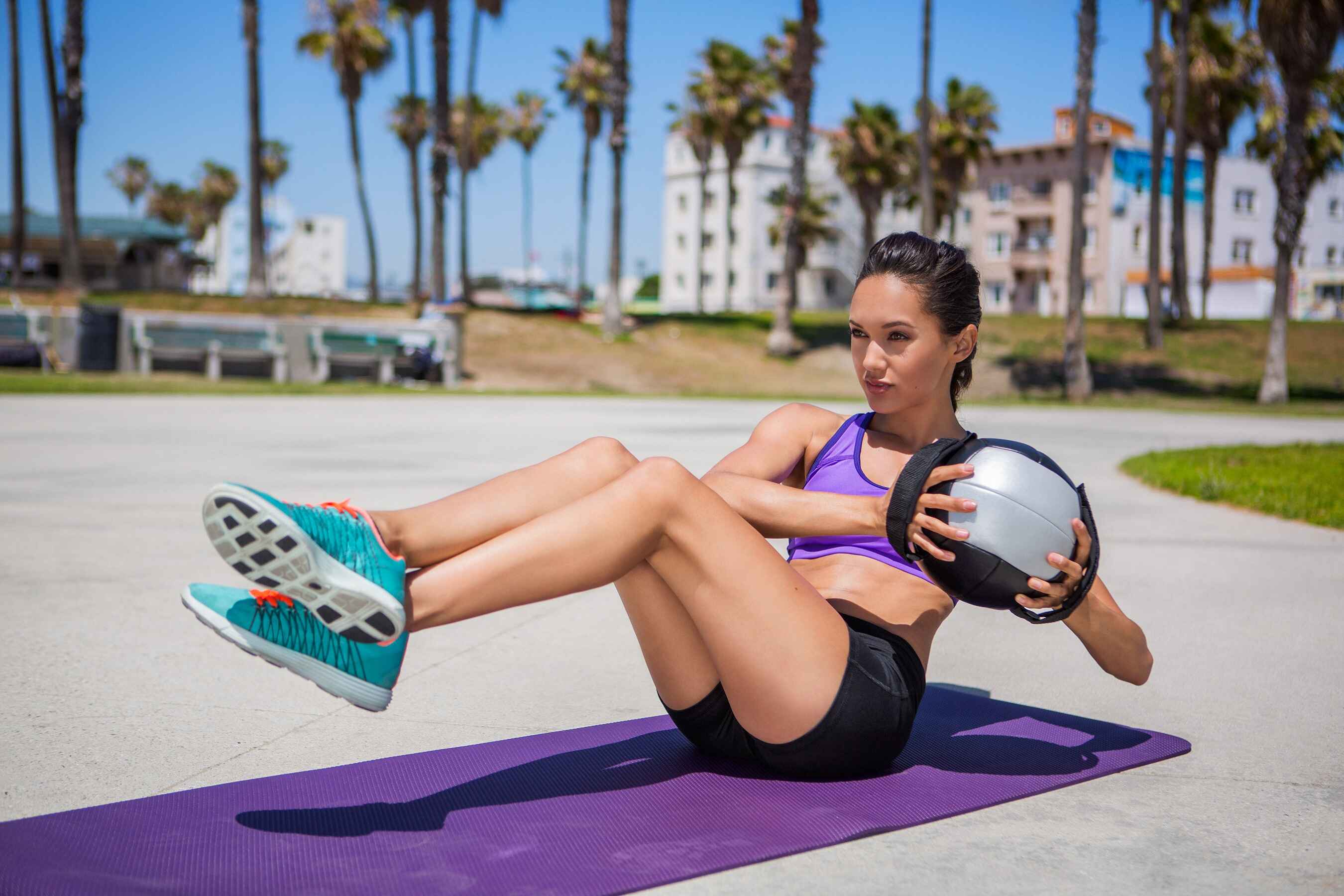Train Like Olympic Beach Volleyball Players Tri Bourne and Trevor Crabb

Beach volleyball is very challenging in terms of agility, strength, and explosive power. The sand sand doesn't act like most floors. A player who competes regularly in the AVP circuit, with their eye on the prize of the Tokyo 2020 Olympics, is literally sharpening their skills with targeted routine. Their circuit merges exercises that are not only about building strength but also have elements to improve stability, coordination, and injury prevention. This makes it ideal for any athlete to build their athleticism, especially on uneven terrain. Here is how to train like Bourne and Crabb, along with a break down of their workout.
The Workout
1. Shoulder Circuit

Exercise: Face Pull with Rotation
Sets/Reps: 2 sets of 10 reps
How: Use resistance bands for a face pull, then an external shoulder rotation.
Work: This exercise involves the rotator cuff, shoulders, and lats-all of which are essential in overhead movement such as spiking, blocking, and setting.
Coaching Tip: "It prevents shoulder injuries by warming up muscles we heavily use," says Crabb.
2. Band-Resisted Arm Swing

Sets/Reps: 2 sets of 10 reps
How: With the use of a resistance band, swing your arm back with rotator cuff and core activity.
Focus: Improve stability and mobility at the shoulder to deal with impacts from high velocity movements.
Coaching Tip: "Activate your core-this is where your power comes from in volleyball," says Bourne.
3. Tempo Straight-Arm Pulldown

Sets/Reps: 2 sets of 10 reps
How: Perform a fast lat pulldown then slow return.
Focus: Emphasizes building explosive strength for jumping and maintains the biggest range of motion available in the arm, which assists in creating upward momentum.
Training Tip: Bourne advises, "Try to get your arms as far back as you can with engaged lats."
4. Glute Activation

Exercise: Mini-Band Glute Warmup
Time: 5 to 10 minutes
How: Using mini-bands, add resistance through assorted stances, warming up the glutes and building strength in multiple planes.
Focus: Essential for control and building muscle memory so that a player can settle while keeping track of the unpredictable ball.
Coaching Tip: "Your foot should change angle with every pass, like a game does," says Bourne.
5. Side Shuffle with Ball Toss

Sets/Reps: 4 each way, 4 x per set
Step: Side shuffle, toss a tennis ball back and forth.
Focus: This drill enhances the defensive agility of a player, his change-of-direction speed, and especially hand-eye coordination.
Coaching Tip: Bourne says, "The precision required by using a smaller ball fine-tunes hand-eye coordination."
This practice develops the physical qualities needed to play beach volleyball while adding movement and muscle memory drills that are suited for the game's requirements. All these exercises can also be modified to apply for almost any fitness level as you train for volleyball or just to improve functional fitness.



